Ibex
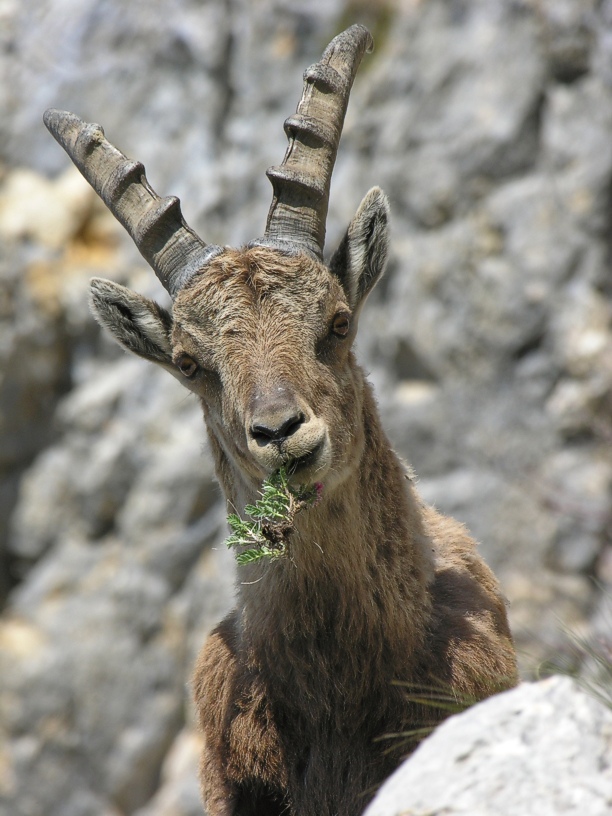
Picture: June 2006
History

The cliff in the mountain area Vercors, near Grenoble, where the male Ibex from this page where met.
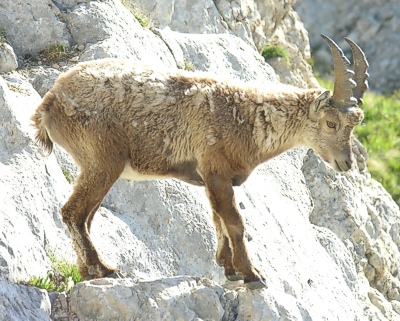
A rather young male Ibex.
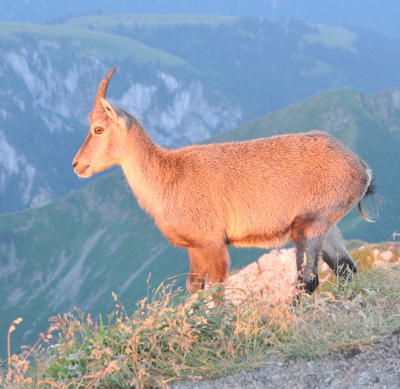
A female Ibex.

A youngster
Following intensive hunting Alpine Ibex were on the verge of extinction at the beginning of the 20th century, except for those kept jealously by Italian King Victor Emmanuel II in a private hunting area. Some youngsters could (immorally however) hopefully be poached and reintroduced starting 1911 in other areas in the Alps. Now Ibex thrive again in the Alps with over 30000 animals.
Description
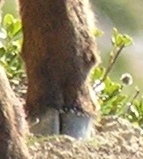
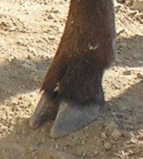
Hook of hind leg, closed; hook of front leg, open.
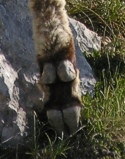
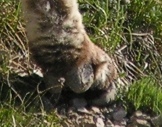
Hook of hind leg, raised; hook of front leg, laying.
I
bex are larger and thicker than goats, and they can reach 100-150kg. There are to remarkable features
to Ibex.
The first feature is their horns. Their horns grow continuously during their entire life, each year adding a ring. The most impressive horns are held by males, with a length commonly 50cm and up to 1m for the older items. The horns of females have much shorter, typically 20cm, and their rings are less marked.
The second feature is their hooks. Each hind and front leg has a set of four soft hooks that allow the animal to literally grasp the rock and climb in very steep areas.
Location
I
bex can be found in all three mountain areas around Grenoble; Vercors,
Chartreuse and Belledonne. The pictures on this page were taken taken just after sun rise, at a western cliff
of the Mountain area Vercors for male Ibex, at Dent d'Oche near Geneva lake for female and yougster.
Ibex are best seen in the morning or evening when they are feeding themselves. In most cases Ibex are found in flocks of the same gender.
Links
- Diaph.org: Pictures and explanations (French).
- Alpesoiseaux.free.fr: Pictures and explanations(French).